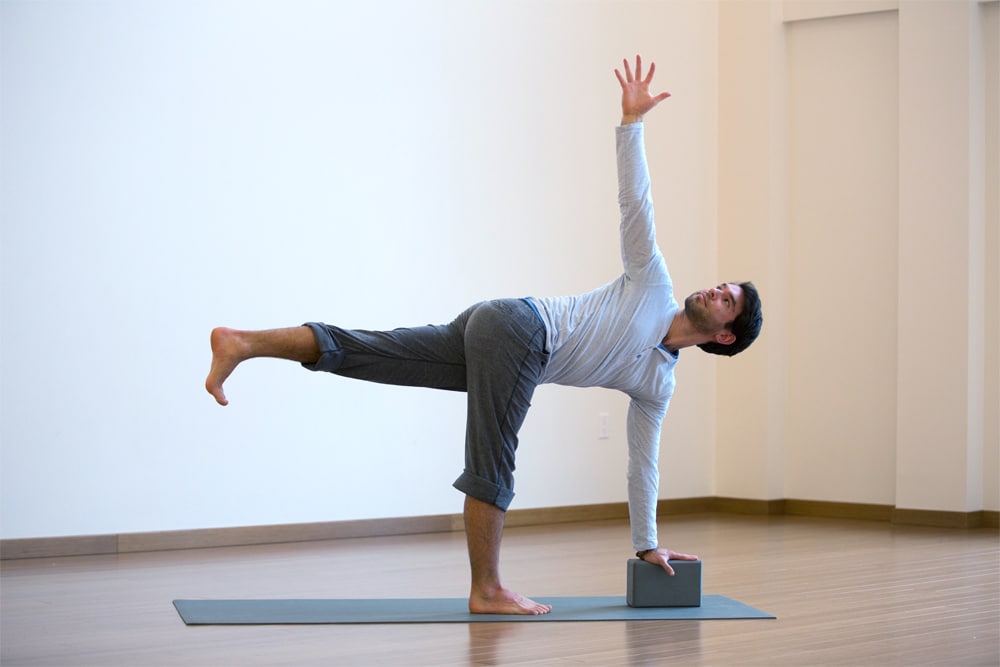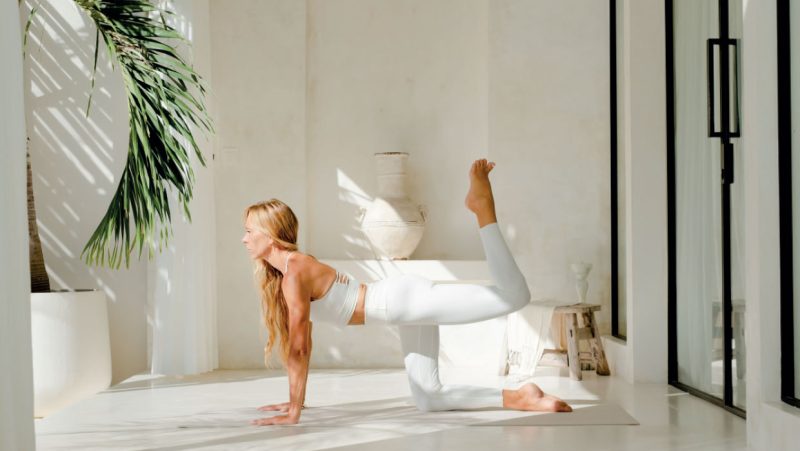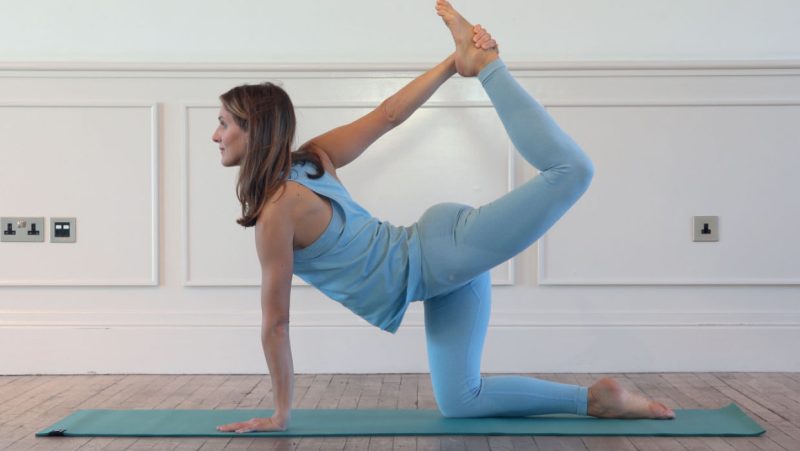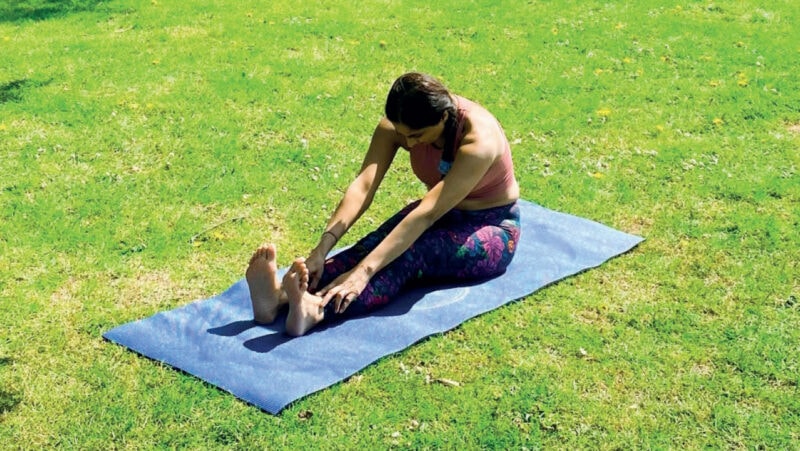Juan Villegas takes us through Revolved Half Moon (Parivrtta Adha Chandrasana) – a standing pose that combines balance and a twist.
Benefits of Revolved Half Moon
Revolved Half Moon is a great combination of lengthening, balancing and twisting. The extension of the arms in opposite directors creates elongation across the muscles of the chest and spaciousness in the cavity where the heart resides. This is the perfect pose for strengthening the bones and the muscles of the standing let, improving balance. The twisting action in the torso stimulates the digestive system as well as the vertebral discs keeping them flexible and healthy. Somatically, the spinal rotation stimulates Manipura Chakra, responsible for cultivating qualities such as self-control, personal power and humour. It also stimulates Muladhara Chakra which creates a sense of grounding, security and patience.
Common Mistakes
If there is a lack of flexibility in the hips and the hamstring muscles of the standing leg, the spine will tend to flex forward and round creating unhealthy compression on the vertebral discs. On the other hand, if the hamstring muscles of the floating leg are not engaged properly the leg will not fully extend and it will feel extra heavy, and this will also collapse the hip which is supporting the floating leg. Tightness in the chest muscles will create internal rotation of the top shoulder. The back of the neck tends to compress so be aware of the neck and keep it in one line with the spine. Finally, watch for knee hyperextension of the standing leg and micro bend the knee to protect the back ligaments of this joint.

Tips
- The principles behind this pose are hip opening, arm extension, balance and spinal rotation so Warrior 2 (Virabhadrasana II) is an accessible yet challenging pose which warms up the hips, grounds the legs and brings awareness to spinal and arms extension.
- Tree pose (Vrksasana), Warrior 3 (Virabhadrasana III) and Half Moon (Ardha Chandrasana) are great poses to create awareness in the bones of the legs and muscles that aid in one leg balancing and they also serve as hip openers.
- After creating awareness in the legs, hips and arms, the spine can be warmed up for rotation with poses such as Revolved Chair (Parivrtta Utkatasana), Revolved Triangle (Parivrtta Trikonasana). Be mindful of lengthening the spine with each exhalation to avoid vertebral disc compression. Use a block under the grounding hand to aid in the lengthening of the spine.
Awareness
Use caution when practicing Revolved Half Moon if you have any knee or ankle injuries, shoulder or neck injuries. Finally, watch for lower back compression; if it hurts, reduce the amount of spinal rotation. You want to keep your body young, healthy and injury free by listening to it.
Juan Villegas is a YogaCara GLOBAL yoga teacher.
Find more Man on the Mat poses here.







